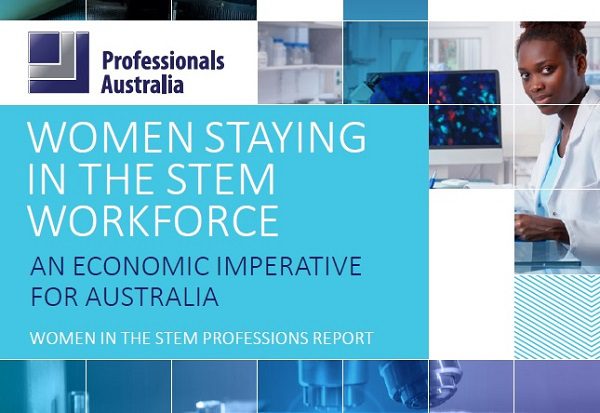Welcome to the latest Professionals Australia Women in STEM Professions Survey Report.
The report is set out in three parts.
PART 1
The first part of the report looks at the current status of women in STEM in relation to:
- the low participation rates of women in the STEM workforce generally and in some STEM fields in particular;
- the low levels of women with post-secondary qualifications in STEM;
- the low representation of women at management and executive levels in STEM;
- some of the reasons for the attrition of women from the STEM workforce;
- the gender pay gap in STEM;
- the gap in retirement savings for women generally and in STEM; and
- the gendered impact of the COVID-19 pandemic.
This part of the report references data from a range of sources including the Chief Scientist’s Office and the Workplace Gender Equality Agency (WGEA).
The information on the pandemic aims to provide a basis for understanding the significant impact of COVID-19 on women and their employment. It is a summary of some of the effects of the pandemic shown by both external research and Professionals Australia’s surveys. Whether the effects are temporary disruptions that will reverse when the pandemic recedes or whether they involve longer-term structural change will become evident over a longer timeframe.
PART 2
With strong concerns about responses to the pandemic having the potential to entrench existing inequality, it is important that we have a detailed understanding of those inequalities.
To that end, the second part of this report looks at the complex range of factors at the workplace level that contribute to the current status of women in STEM. This part of the report aims to identify the persistent and ongoing drivers of under- representation based on the Women in STEM Survey results, including:
- attrition from the STEM workforce;
- lack of flexible work options at senior, management and executive levels;
- bias in career-building activities;
- the career penalty attached to working part-time;
- the impact of career disruption;
- workplace culture including long working hours and exclusionary behaviours;
- biases in decision-making and recruitment;
- discrimination and sexual harassment; and
- gender stereotyping.
PART 3
While there is no-one-size-fits all approach, the third part of this report sets out a model action plan based on our survey findings that follow from which organisations can draw on as needed to address the factors that contribute to women leaving the STEM professions. This includes addressing the key drivers of attrition pre-COVID-19 and those that were exacerbated during the health crisis.
We have included comments from our survey respondents across the report to help illustrate first-hand the experiences of professional women in the STEM workforce.


